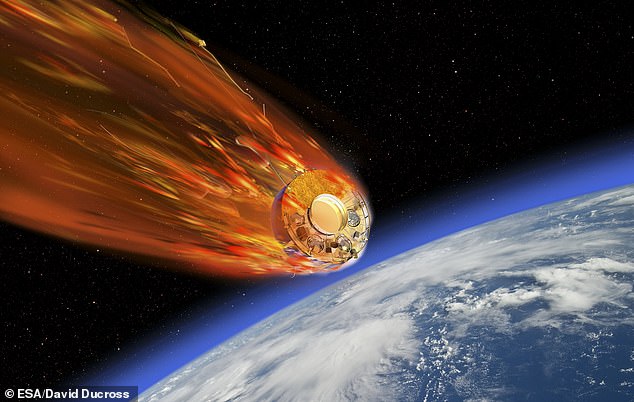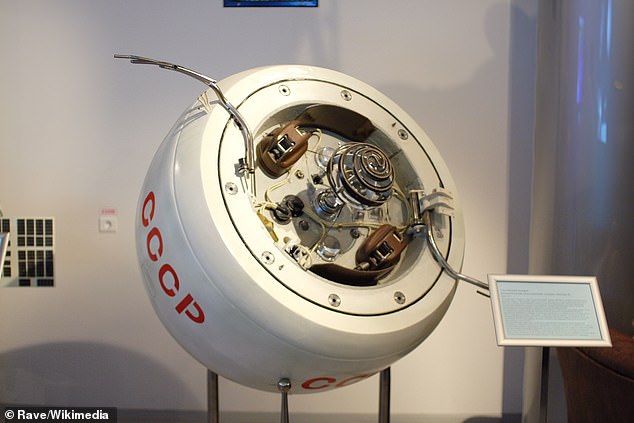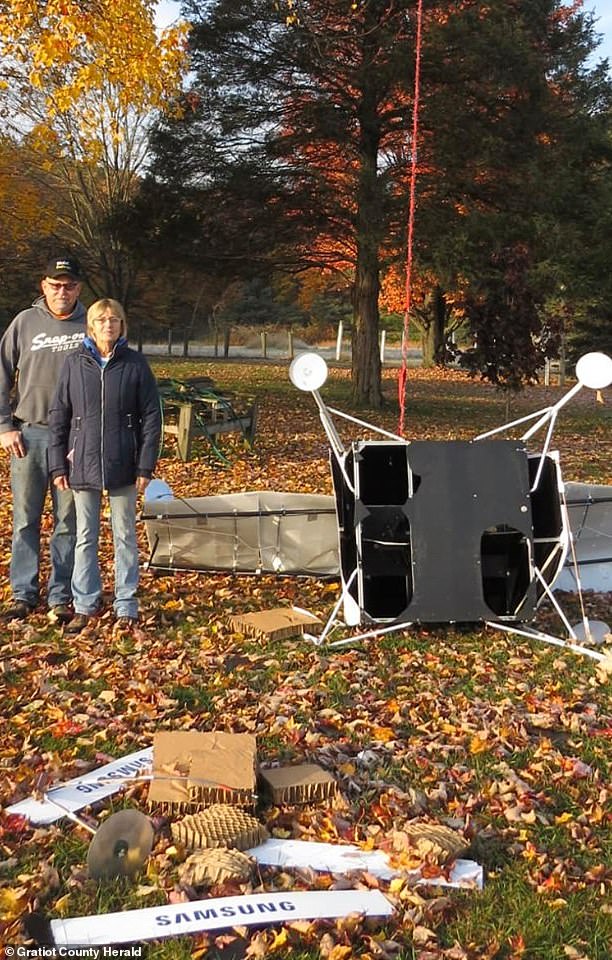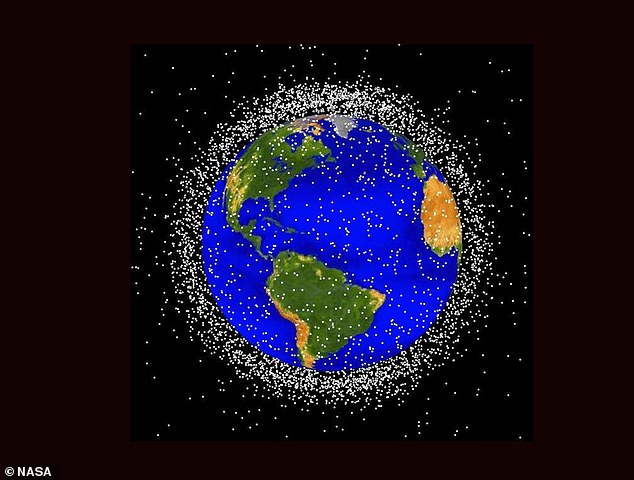A dead Soviet satellite will soon make an uncontrolled reentry into Earth’s atmosphere, sparking concerns as scientists do not know where it will land.
The Kosmos 482 spacecraft launched in 1972 carrying a probe that was supposed to detach and fly all the way to Venus.
But due to an engine malfunction, the spacecraft failed to escape Earth’s gravitational pull and has been orbiting our planet for the last 50 years.
Scientists who have been tracking Kosmos 482’s orbital height say it has been gradually spiraling lower and lower, and should reenter the atmosphere sometime between May 8 and 11.
Researchers at one satellite tracking station in the Netherlands have pinpointed a most likely date of May 10.
This one-ton object could hit practically anywhere on Earth, experts say, explaining that it’s too soon to narrow down its landing zone.
But there is a very small chance that Kosmos 482 could crash-land in a populated area, potentially slamming into someone’s front yard, smashing through a roof or even injuring someone.
‘If this were to cause damage — or worse, to hurt someone — that would be something that the Russian government would be liable for,’ Harvard University astronomer and astrophysicist Jonathan McDowell told DailyMail.com.

A dead Soviet satellite will soon plummet back to Earth uncontrolled, potentially smashing into the planet’s surface within the next few weeks (STOCK)
He identified this gradually descending object in 2000, determining that it was most likely the separated reentry capsule from the Kosmos 482 spacecraft.
The main body of the spacecraft fell back to Earth in 1981 and likely burned up in the atmosphere, as it has never been recovered. But it’s reentry capsule, which was ejected into higher orbit during the launch, has remained in space.
This capsule was supposed to make it to Venus, where it would attempt to enter the planet’s atmosphere and crash land on the surface.
It is therefore equipped with a heat shield designed to prevent it from burning up when it entered Venus’ atmosphere.
But because it never made it to that planet, the shield is likely still intact, and it could allow the capsule to survive a fall through Earth’s atmosphere.
That is why scientists expect this object to crash-land on our planet.
When the Kosmos 482 capsule reenters Earth’s atmosphere at 17,000 miles per hour, it will be surrounded by a shock wave and a burning ‘fireball’ as the atmosphere compresses beneath the force of its fall, McDowell explained.
Friction between the capsule and atmospheric particles will eventually slow its descent to a couple hundred miles per hour, he added.

A replica of the Kosmos 482 Soviet spacecraft at the Memorial Museum of Astronautics in Russia

This wouldn’t be the first time a satellite has crash landed on Earth. In 2019, a Samsung satellite crash landed in a Michigan family’s backyard
‘It’s completely impossible that the parachute system it had to land on Venus is going to operate,’ McDowell said.
‘And so it’s just going to slam into the ground . . . So it’s [like] a car falling out of the air at 100 to 200 miles per hour.
‘So it doesn’t destroy a city block or anything like that, but if it lands on your house or on you, that’s not going to be good,’ he said.
But the odds of Kosmos 482 actually hitting you or your home are incredibly slim, McDowell said.
‘If you land something in a random part of the Earth, the chance that it hits a person is about one in 10,000,’ he said. ‘And that is because most of the Earth is not covered with people, even today.’
‘The chance that it hits you is then one in 10 billion — smaller than that,’ he added. ‘You do not have to lose any sleep over this.’
However, it wouldn’t be the first time that space junk has crash landed in someone’s community.
In March 2024, a smartphone-sized chunk of garbage jettisoned from the International Space Station (ISS) failed to burn up during its descent through Earth’s atmosphere, falling through the roof of a home in Florida.
‘It was a tremendous sound. It almost hit my son,’ homeowner Alejandro Otero told CNN. ‘He was two rooms over and heard it all.’

There are about 3,000 dead satellites like Kosmos 482 currently orbiting Earth, according to the ESA. Some of these objects could eventually pose a risk to human safety
Just a few months after that incident, much larger pieces of debris from a SpaceX Crew Dragon spacecraft landed near a mountain top resort in North Carolina, though they did not cause any damage or injuries.
McDowell said there is a chance that he misidentified this object as the Kosmos 482 capsule back in 2000, in which case it’s probably something that will burn up entirely upon reentry.
And even if it is Kosmos 482, it’s also possible the capsule’s 50-year-old heat shield won’t survive the descent as it wasn’t designed to be in space for this long. But McDowell still suspects it will ‘hold up.’
‘it’s dense enough and massive enough that the chance that it will burn up completely is low,’ he said. ‘My guess is it’ll be largely intact until the moment it hits the ground.’
There are about 3,000 dead satellites like Kosmos 482 currently orbiting Earth, according to the European Space Agency (ESA).
Some of these objects could eventually pose a risk to human safety.
‘I think the larger objects — or the objects that provide more of a risk because, like this object, they have a heat shield — you’d really rather not have them reentering uncontrolled,’ McDowell said.
That’s why scientists are testing out strategies to bring these objects back to Earth safely instead of letting them plummet through the atmosphere on their own.
These include fleets of ‘space garbage trucks’ — spacecraft that are able to collect dead satellites and other forms of orbital debris and return them to our planet for disposal, McDowell explained.
‘I think the time has come to start to clean up,’ he said.
